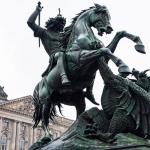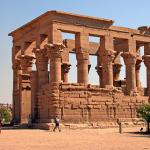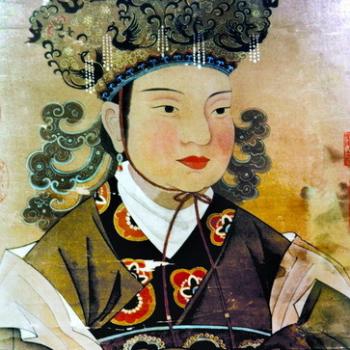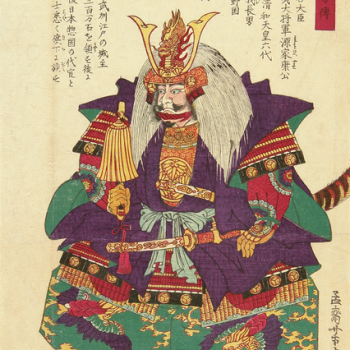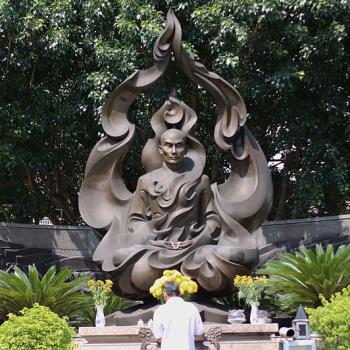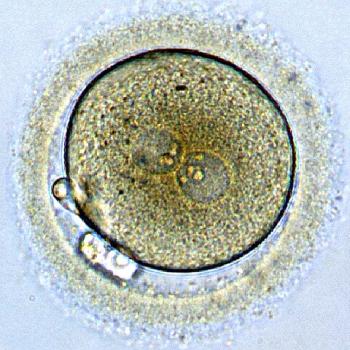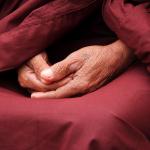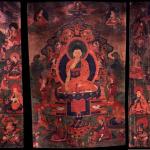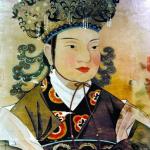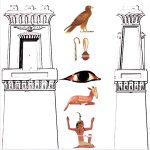What are the origins of dragons? It isn’t clear when and where dragons first appeared in the world, or even if there was a “first appearance.” Creatures with some of the attributes of dragons are found in the earliest folktales and legends of many cultures around the world. It’s commonly speculated that such creatures were inspired by dinosaur fossils. Anthropologist David E. Jones, in his book An Instinct for Dragons (Routledge, 2002), argues that humans are “hardwired” to believe in dragons and similar monsters because of our innate fear of predators, programmed into us through millennia of evolution. See also Why serpents & dragons are beloved in the non-western world by Ben H. Gagnon here at Patheos.
We might sometimes quibble about which ancient mythological creatures qualify as dragons. Sumerian myths tell us of the god-mother Tiamat, who is said to have transformed herself into a dragon-like being. In the Enuma Elish, the epic Babylonian story of creation, she is described as having a tail. The Enuma Elish dates to no later than the 12th century BCE, which would make Tiamat a very early dragon. Whether having a tail qualifies one as a dragon is a debatable point, however. In a much later image she appears to be a cross between a bird and a panther, although her story associates her with water. Again, is a panther-bird a dragon? Eventually, the myths tell us, the evil Tiamat was killed by the god Madrak, and the earth and heavens were formed from her body.
Today, I understand, Tiamat appears as a five-headed dragon in the role-playing game Dungeons & Dragons. I apologize to D&D Adventurers if I’m wrong about that. But I don’t believe Tiamat ever had five heads and scales in back in the day in Mesopotamia.
Origins of Dragons of China
In China, dragons came into their own. They were not just the occasional superpowered monster but their own species. Carved jade dragons have been excavated at sites of the Hongshan culture of north China, dated to 4500-3000 BCE. In Chinese culture and religion, dragons are benevolent and wise. They symbolize power, creativity, heaven, and good fortune. Some of the ancient emperors were said to have been the sons of dragons. There are dragons who live in the heavens, and dragons who live in water. Dragons permeate Chinese arts and decorate temples of all the religions of China.
Very early Chinese dragons had characteristics of many animals, including deer’s antlers and tiger’s paws. In time, east Asian dragons came to have a distinctly snake-like body. This may be because, through the introduction of Buddhism, they came to be associated with nagas. Nagas are snake-beings found in early Indus peninsula cultures. In some early art nagas have the upper body of humans, but the rest of them are all snake. Sometimes they look like giant cobras (naga is the Sanskrit word for “cobra”), often with multiple heads. In the Mahabharata, nagas are depicted as mostly villainous creatures bent on harming others. However, in Buddhist scriptures they came to be treated more sympathetically. Sometimes the Buddha is pictured seated in meditation with a huge multi-headed naga-cobra right behind him, spreading its hoods to shield the Buddha from the elements.
In east Asian Buddhism, nagas came to be synonymous with dragons. But in Tibetan Buddhism, dragons and nagas are entirely different critters. In Tibet, nagas are nasty water-dwelling spirits that cause disease and misfortune, which makes them more like the nagas of early India. Tibetan dragons, on the other hand, are protectors of Buddhism whose thunderous voices awaken us from delusion. Even so, a Tibetan dragon’s body usually has the same snake-like appearance as a Chinese dragon.
A Dragon Folk Tale
There was once a man named Yeh Kung zi who was besotted with dragons. He filled his home with dragon art and studied dragon lore. He would talk on and on about dragons to anyone who would listen. One day a dragon heard of Yeh Kung zi and thought, how lovely that this man truly appreciates us dragons. I will go visit him. It will please him so much to meet a true dragon. So the dragon flew to Yeh Kung zi’s house and quietly entered in the night. But when Yeh Kung zi woke and saw scales and teeth glittering in the moonlight, he screamed in terror. Then he grabbed a sword and lunged at the dragon, who flew away. Yeh Kung zi lost his interest in dragons after that.
Many generations of east Asian Buddhist teachers have used the True Dragon story in their teachings. A person who loves porcelain dragons but is terrified of a true one is like a person who keeps beautiful Buddhist art but makes no effort to practice the Buddha’s teachings to realize enlightenment. The Japanese Zen master Eihei Dogen (1200-1253) once wrote, “I beseech you, noble friends in learning through experience, do not become so accustomed to images that you are dismayed by the true dragon.”
Dragons of China often carry an orb in their paws. The orb is a pearl, and the pearl has power to grant wishes. There are a number of folk tales about people who came into possession of the dragon’s wish-fulfilling pearl.
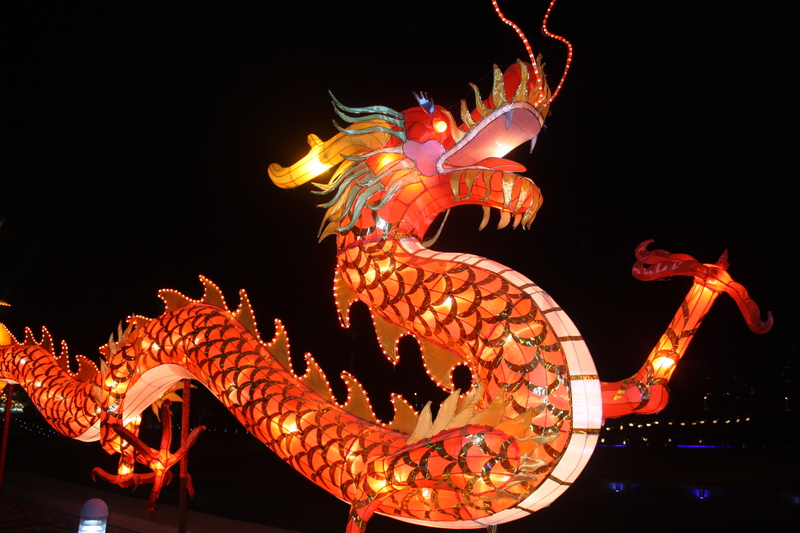
Origins of the Dragons of Europe
European dragons are said to have evolved from Greek dragons, who may have been influenced by Near Eastern dragons and the dragons of old Mesopotamia. The European dragon does bear a resemblance to the Chinese one except that it is more obviously reptilian and breathes fire, which Chinese dragons rarely do. The fire breathing signifies they are creatures of hell. The association between dragons and guarded treasure seems to come from Greek mythology. Greek dragons often guarded precious things. A dragon guarded the Oracle of Delphi until Apollo killed it, for example. The English word dragon evolved from the Greek drakōn.
The European dragon is a thing to be feared and must be slain by noble knights like Saint George. The one exception I know of is Y Ddraig Goch, the Red Dragon who is the national symbol, protector, and team mascot of Wales. I once attended a lecture in Caernarfon Castle in which the lecturer said dragon imagery came to Wales from China via the Roman occupation, which is entirely possible considering Romans occupied Britain at the same time the Silk Road enabled trade between China and Rome. The draco — Latin for dragon — was sometimes used as standard by Roman troops.
Other Dragons
Here’s a shout-out to Quetzalcoatl, the winged serpent of the Aztecs. god of the morning and evening star who brings both death and resurrection. But beware of the kikituk, a seagoing reptile known by Inuits of Alaska that walks ashore hunting humans. And one would do well to avoid Apep, or Apopsis, the ancient Egyptian god of chaos who takes the form of a serpent. Was he related to the serpent who tempted Eve, I wonder? Apep was the chief foe of the sun god, Ra, who was the father of creation.
There are no end of dragons in popular fiction today, which makes dragons one of the most consistent features of all of human civilization, throughout time. They deserve some respect, even if they are fictional.


